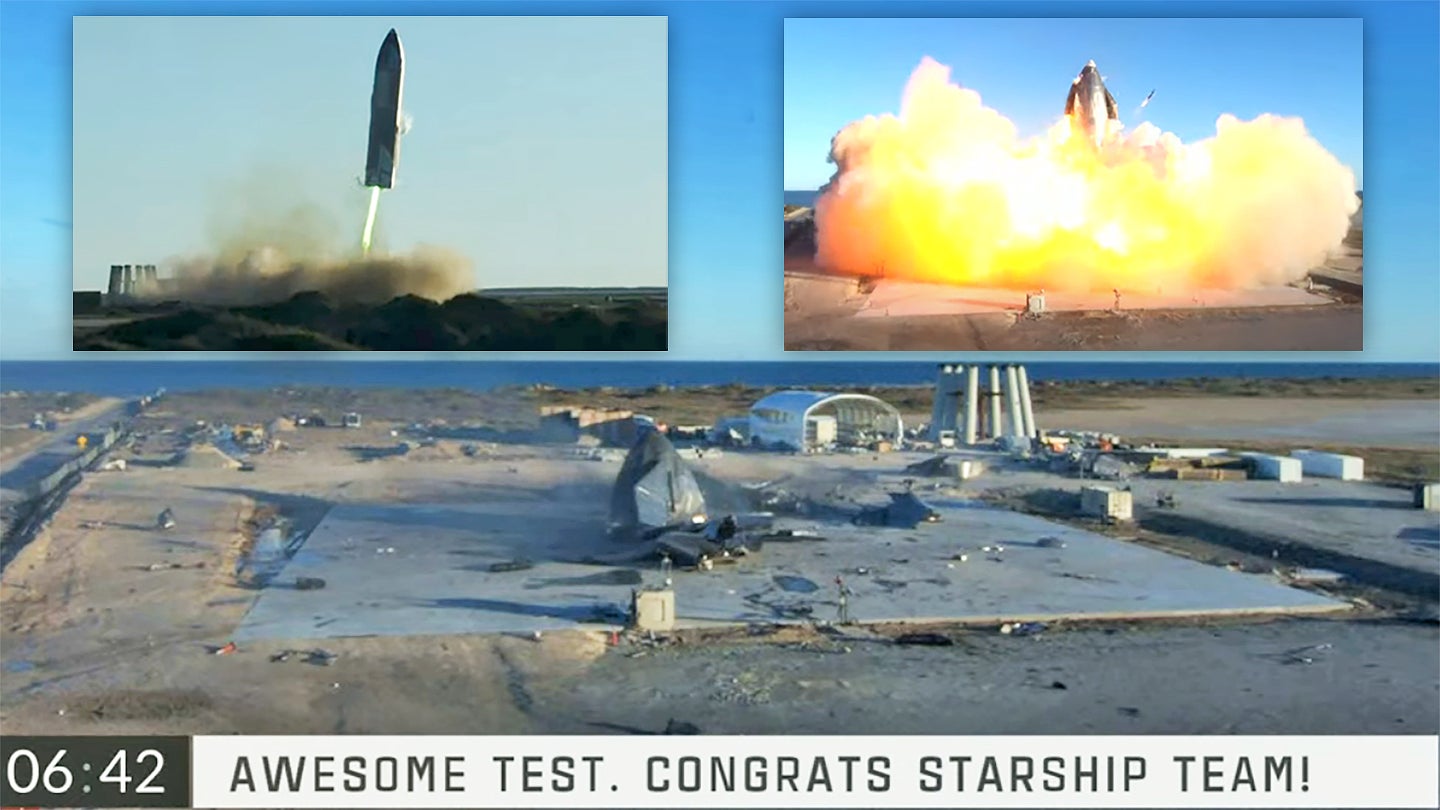Revolutionary spaceflight firm SpaceX once again proved to the world they’re capable of putting on a good show today with the launch of one of their Starship prototypes, Serial Number 8, or SN8. The test was by some measures a success, as the craft was able to reach high altitude and terminate its flight at a particular location, although the landing resulted in a fireball seemingly ripped straight from Looney Tunes.
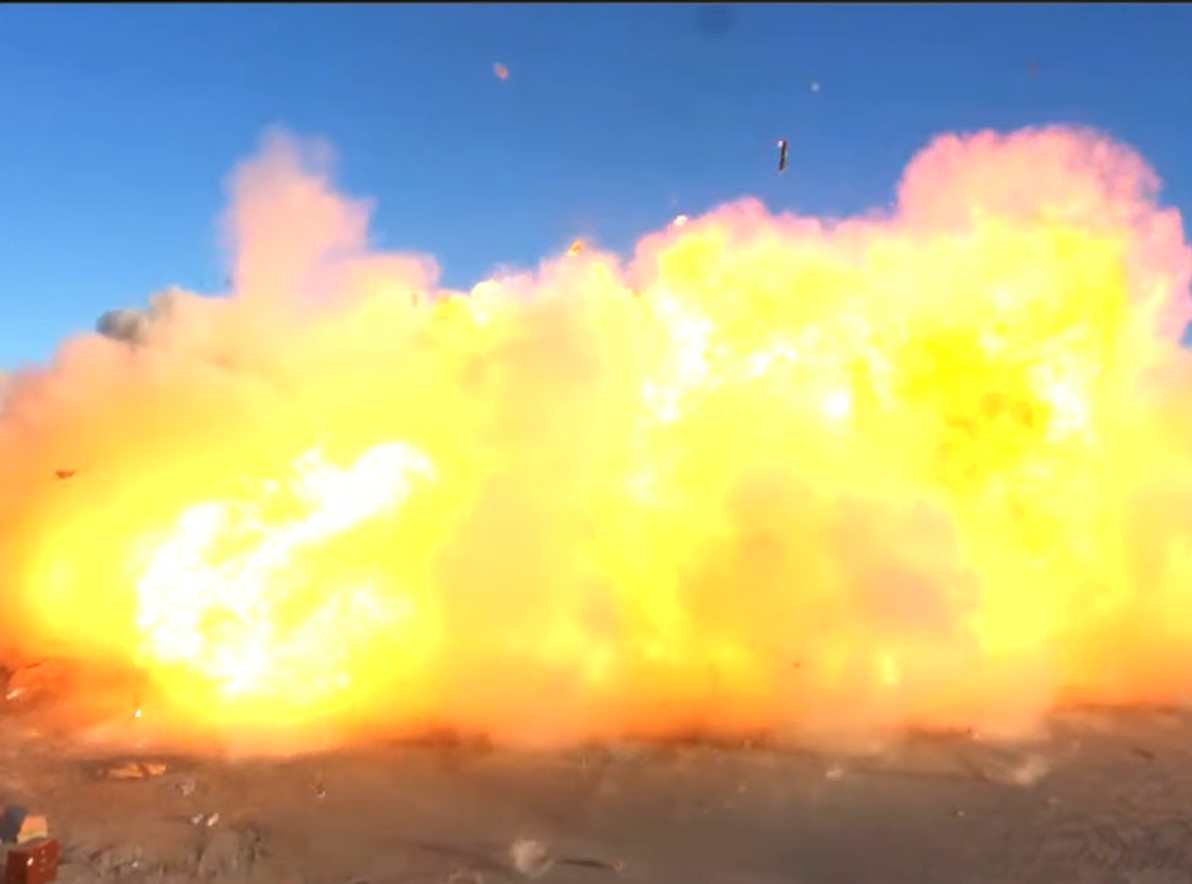
Today’s flight in Cameron County, Texas was intended to test many of the systems and subsystems on Starship and comes on the heels of an aborted test yesterday. “This suborbital flight is designed to test a number of objectives, from how the vehicle’s three Raptor engines perform to the overall aerodynamic entry capabilities of the vehicle (including its body flaps) to how the vehicle manages propellant transition. SN8 will also attempt to perform a landing flip maneuver, which would be a first for a vehicle of this size,” SpaceX said in a statement on its website.

The SN8 prototype flew for six minutes and 40 seconds in its test flight today. SN8 was supposed to reach an altitude of over 40,000 feet, but SpaceX has yet to state the official apogee for its flight. At roughly 1:44 into the flight, it appears as if one of the Starship’s engines fails or is shut down on purpose, while another goes out at 3:15.
At 4:42 into the flight, the Starship executes what SpaceX calls a “belly flop,” turning horizontal to cruise back down to a lower altitude before righting itself upright once more for landing. At 6:32, one of the Starship’s engines reignites bringing the total working engines upon landing to two, but not long after, the prototype rocket is back down to one engine during the very end of its descent phase. At 6:40, the ship crashes into the designated landing area, exploding in a magnificent fireball worthy of a Michael Bay film.
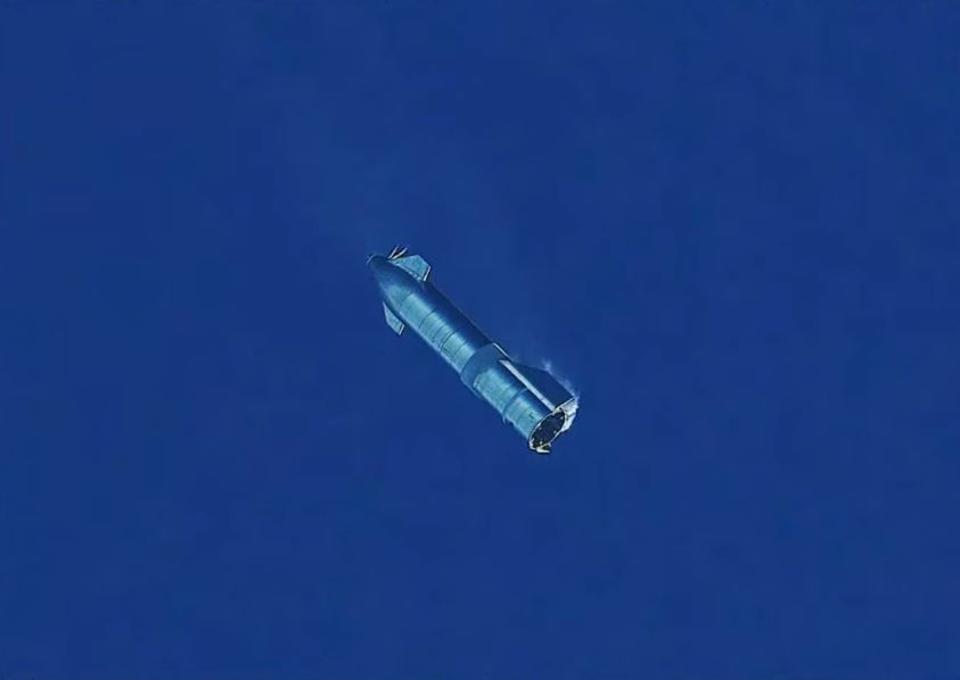
Watching these epic SpaceX failures has been at least some small part of the appeal of their highly-publicized tests and launches, and hearkens back to the early days of the Space Race. SpaceX prefers what’s known as an iterative design model, meaning the company tests and flies new vehicle designs, and test articles based on those designs, as quickly as they can, with a high risk of failure being factored into the development and learning process.
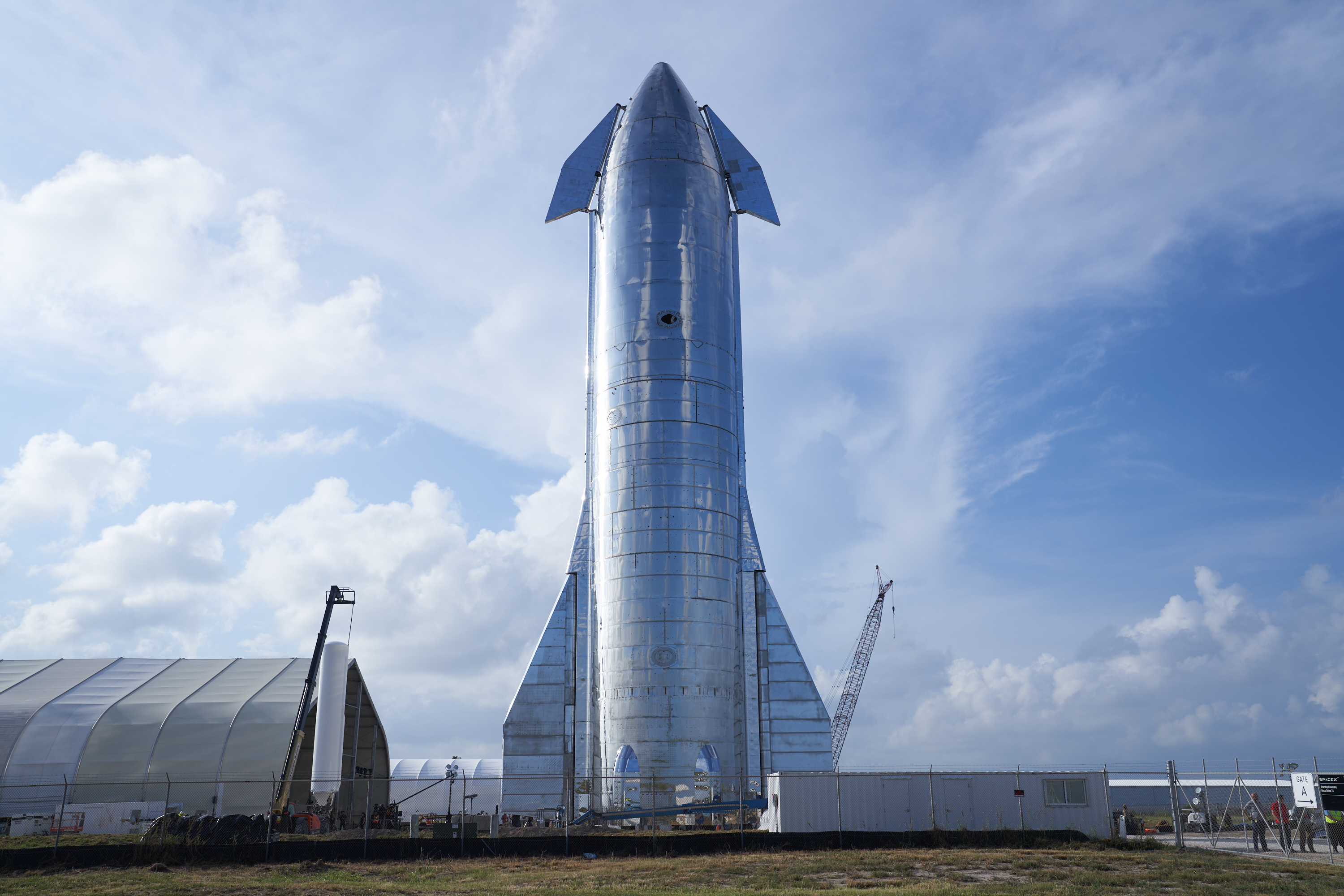
This has resulted in quicker R&D timelines for SpaceX’s projects and has led to some major leaps in technological capabilities. It also results in a lot of spectacular, explosive failures. The company has even put out “greatest hits” reels of many of its explosive failures. Space X CEO Elon Musk actually has his own euphemism for these types of failures: RUD, or “Rapid Unscheduled Disassembly.”
Thus, even though SN8 suffered a cinematic RUD upon landing, SpaceX will likely still consider the test a success, based on Musk’s post-explosion tweet.
The 160-foot-tall, stainless steel SpaceX Starship is designed to be a reusable two-stage-to-orbit (TSTO) platform which SpaceX hopes could reach orbital space, the Moon, Mars, or any point on Earth. Already, the idea of a reusable TSTO craft for cargo or personnel transportation has piqued the interest of the Department of Defense. U.S. Transportation Command (TRANSCOM) has already forged a Cooperative Research and Development Agreement (CRADA) with SpaceX to explore options for point-to-point launches capable of reaching any point on Earth in an hour. Of course, if you can deliver cargo to anywhere on the planet in an hour, you can deliver weapon systems or munitions just as fast.
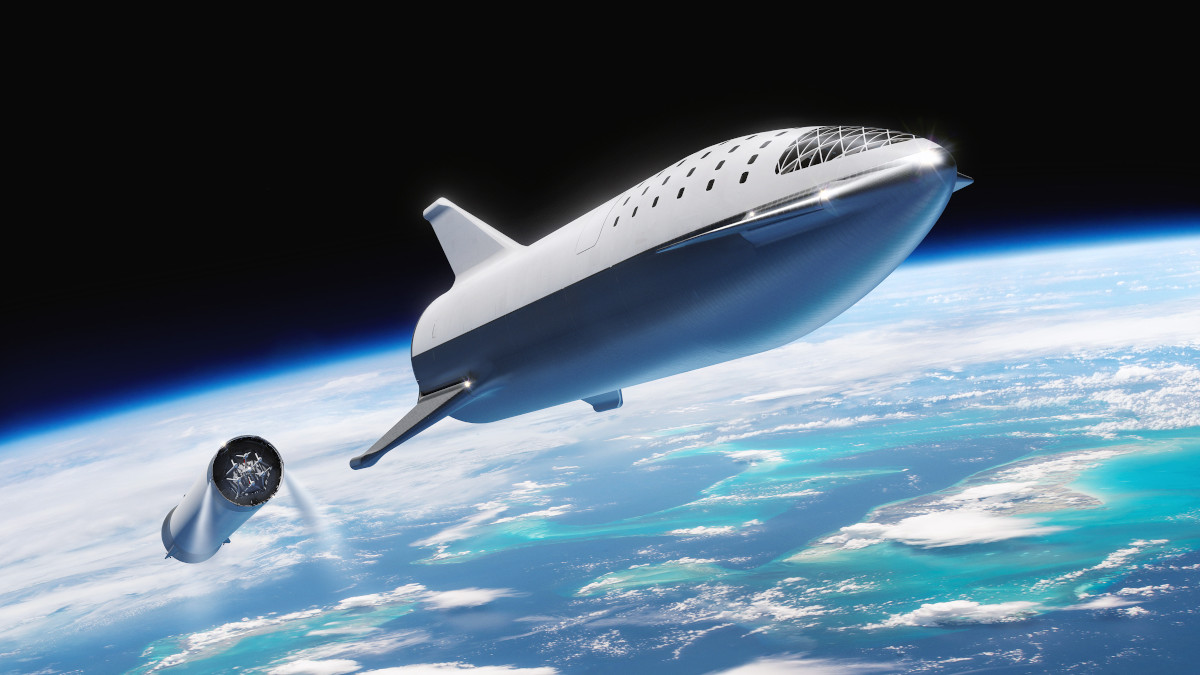

Today’s fiery test is an indication that America’s space program may be on the verge of a revolution not seen in nearly half a century. Musk’s goals are extremely ambitious, but realizing an operational Starship in any capacity would represent a massive leap in spaceflight capability.
Regardless of the uncertainty surrounding such a high-risk program, we can be sure that this won’t be the last spectacular ‘kaboom!’ team SpaceX offers up to all mankind.
Contact the author: Brett@thedrive.com
